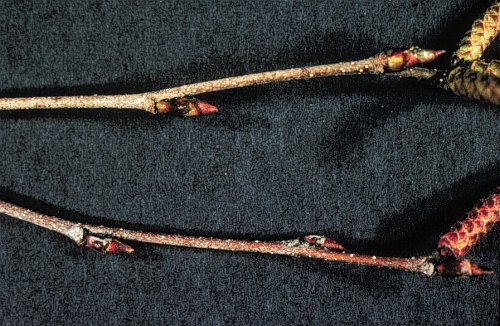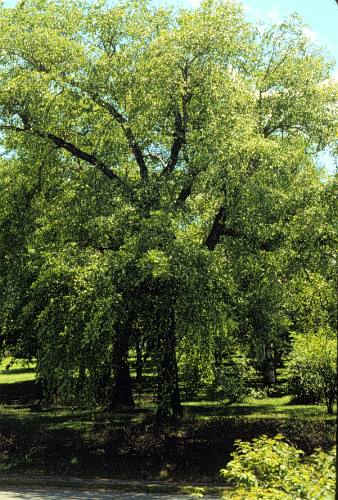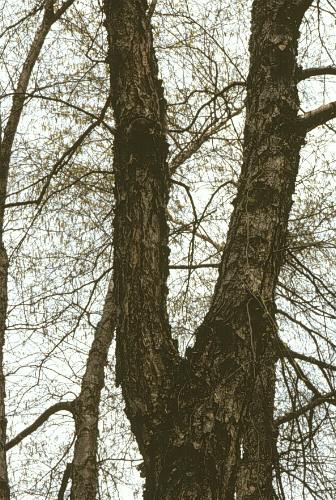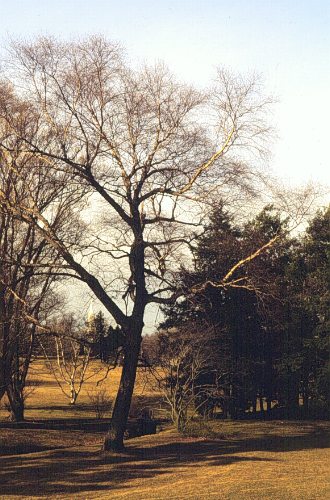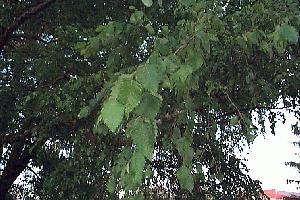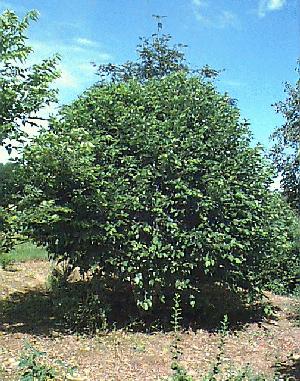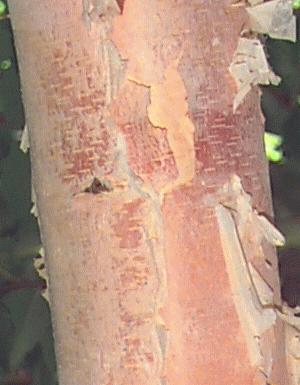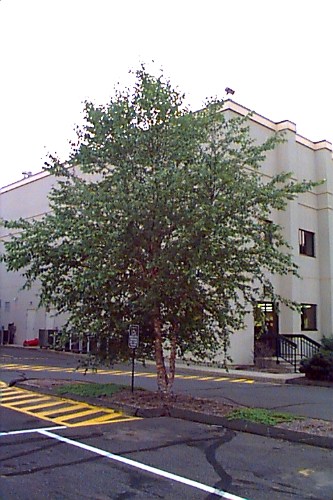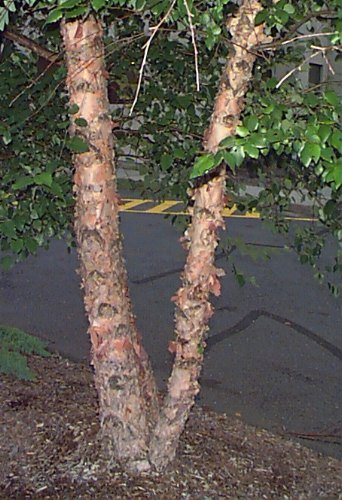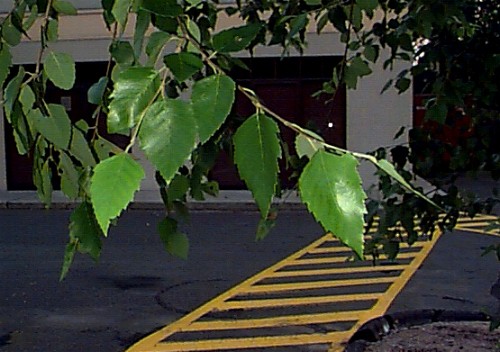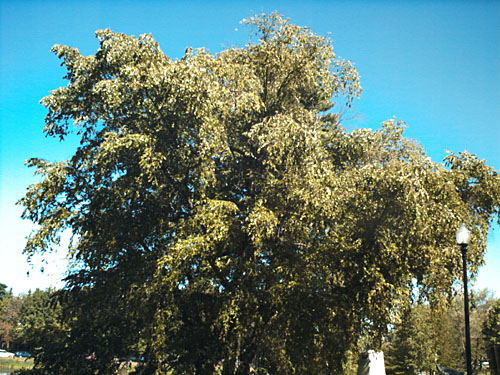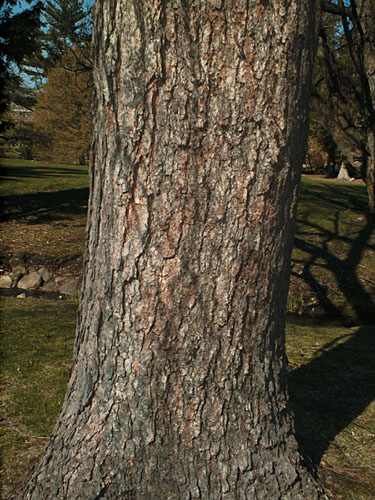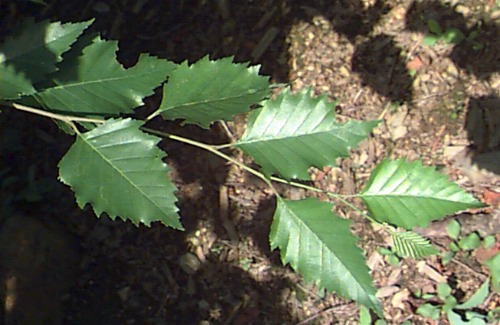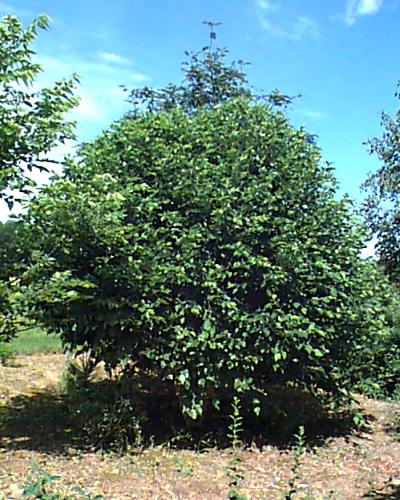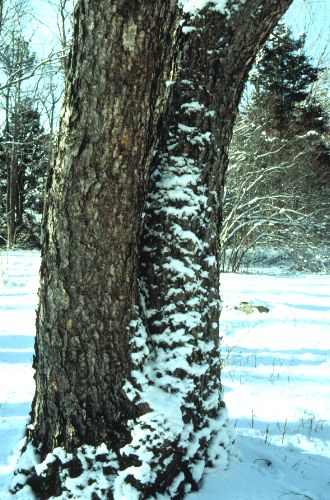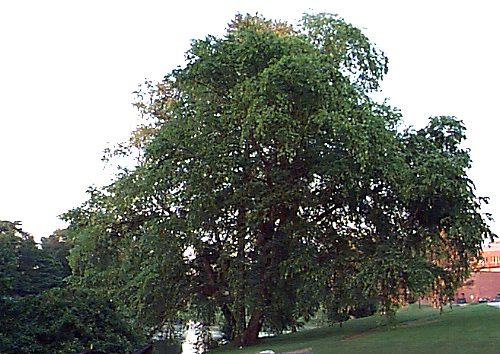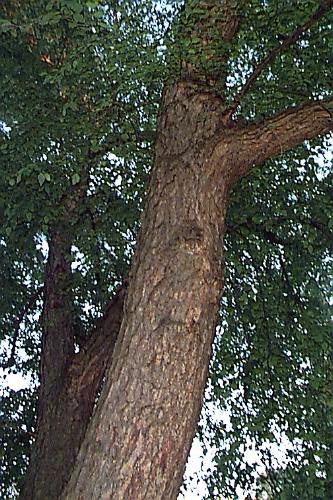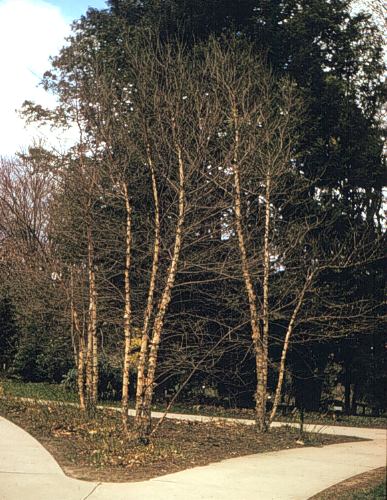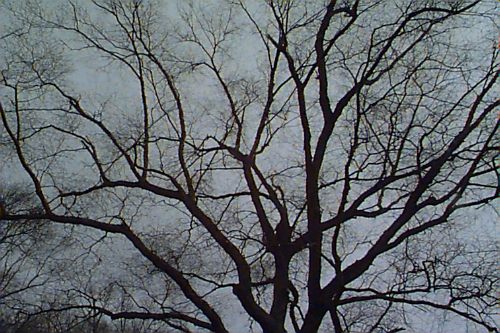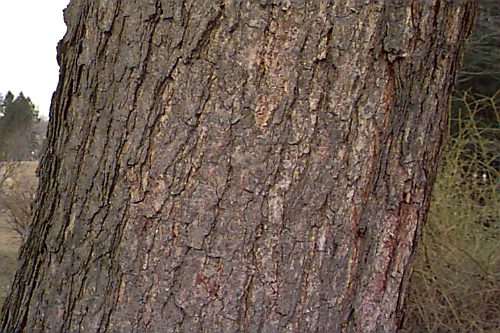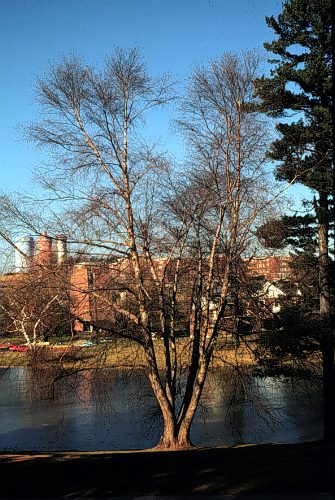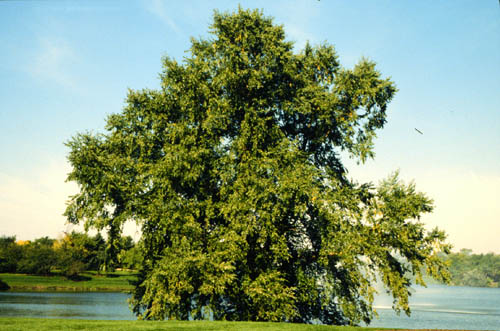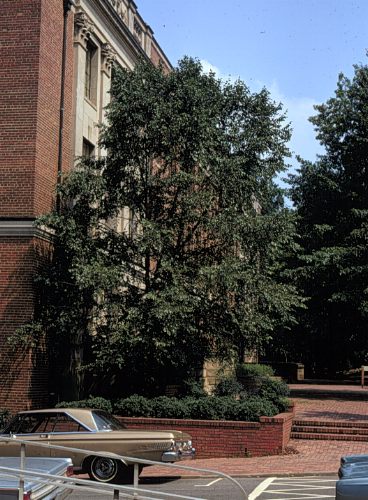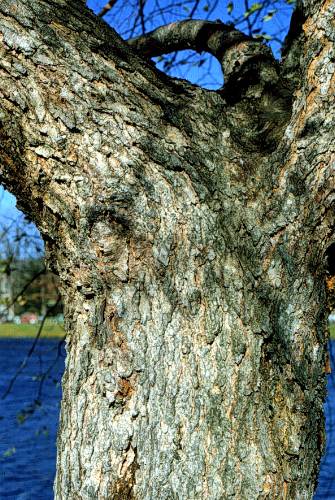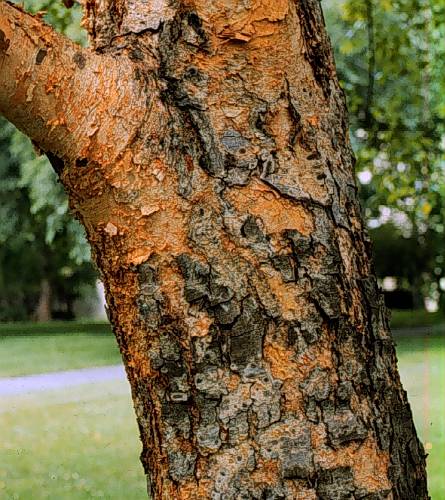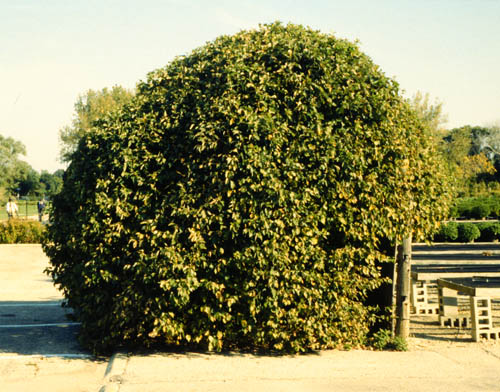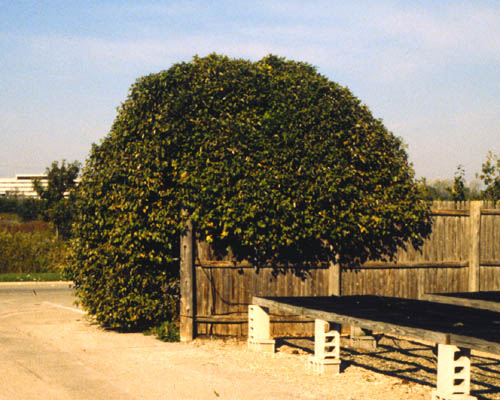Betula nigra
River Birch
Betulaceae
ExpandHabitat
- eastern United States, from southern New England to Florida and west to Minnesota and Kansas.
- zone 4
- in the wild, limited to moist areas and is most commonly found along stream banks and areas that flood
Habit and Form
- deciduous
- medium sized tree, 50' to 70' or larger
- oval or pyramidal when young
- mature specimens exhibit a rounded to irregular crown
- many times grows as a multistemmed plant
- texture is medium
- medium to fast growth rate
Summer Foliage
- lustrous medium or dark green
- alternate, simple leaves
- somewhat diamond-shaped with a wedge-shaped leaf base
- doubly serrate margin
Autumn Foliage
- yellow
- leaves drop quickly
- not the best birch for fall color
Flowers
- catkins
- male flowers are 2" to 3" in bloom, 0.75" prior to bloom
- female flowers are 1" to 1.5" long
- male catkins usually in 3's
Fruit
- catkins of small nutlets
Bark
- young trunk and branches have thin, shiny red-brown bark
- older portions develop creamy orange bark; reminds me of a "creamsicle" that exfoliates in large thin sheet
- bark is showy
- on very old trunks and branches bark turn brown and develops ridges and furrows in a somewhat platy fashion
Culture
- makes best growth on moist river bottom soil, but has proven to be adaptable to dried sites
- develops chlorosis (iron) on soils above pH 6.5
- better adapted to heat than other birches
- easily transplanted and established from B&B or container
- full sun
Landscape Use
- lawn tree, for shade is light and allows turf to grow
- for shade
- useful along streams, in naturalistic areas
- good on larger residences, public grounds, parks, golf courses, etc.
- good for showy bark, especially during dormant season
- effective in groupings or plaza plantings
Liabilities
- chlorosis on high pH soil
- bark not white, for those expecting white bark on birch
- leaf spot in wet years
- relatively trouble-free
ID Features
- creamy orange exfoliating bark
- catkins mostly in 3's
- twigs and buds slightly pubescent
- diamond-shaped leaves
Propagation
- by seed
- softwood cutting propagation used for selections
Cultivars/Varieties
'Cully' (Heritage®) - This cultivar has become the dominant birch cultivar in the marketplace. It is superior in terms of disease resistance, as it is not plaqued as heavily by leaf spot or borers. Ornamentally, the peeling bark is very striking at a young age, exfoliating to reveal salmon-brown and white patches. Fall color can be a good yellow, and the habit is usually multi-stemmed and rounded to 50' tall.
'Little King' (Fox Valley™) - A form that is gaining more exposure and popularity in recent years. It is a relatively dwarf plant not expected to exceed 15' tall, with very dense growth and branches to the ground. The habit is rounded and the bark exfoliates like the species for a good winter display. It might be employed as a specimen or as a hedge/mass in areas with moist soil.
